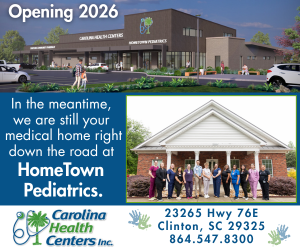Colliers Report: Columbia Sees 20% of CBD Office Buildings Sold in Third Quarter
October 31, 2017Key Takeaways
- Investors acquired four major towers in four months in downtown Columbia.
- Rental rates were slightly lower over the third quarter and year-to-date due to a shortage of high-quality vacant space and new construction.
- Lack of available space hinders absorption.
Market Conditions
The overall market vacancy rate in Columbia fell from 17.43% at the end of th e second quarter of 2017 to 17.18% at the end of the third quarter. The market average asking full service rental rate decreased slightly from $16.56 per square foot per year the previous quarter to $16.02 per square foot per year this quarter. Over the last year, the asking rental rate for the market has decreased 2.3% but that is largely due to the lack of quality vacant product and lack of new construction. In essence, what little vacant space remains is being marketed at a lower rental rate.
e second quarter of 2017 to 17.18% at the end of the third quarter. The market average asking full service rental rate decreased slightly from $16.56 per square foot per year the previous quarter to $16.02 per square foot per year this quarter. Over the last year, the asking rental rate for the market has decreased 2.3% but that is largely due to the lack of quality vacant product and lack of new construction. In essence, what little vacant space remains is being marketed at a lower rental rate.
Columbia Business District (CBD)
The third quarter vacancy rate in the Central Business District (CBD) was 12.27%, down from 12.31% at the end of the second quarter of 2017. The overall average asking rental rate was $19.32 per square foot per year, which was 13.6% higher than a year earlier. Average rental rates fell 5.9% from the second quarter due to the absence of new construction and have largely locked most tenants into place, limiting the amount of space available for rent. Tenants are slowly absorbing the vacant spaces remaining in buildings, and what is left is lower quality, less desirable space that drives the average weighted rental rate lower. When factoring in comparable for renewals and expansion, it appears that rents have largely stabilized with Class A, B and C buildings commanding $23.00 – $23.50 per square foot, $19.00 – $19.50 per square foot and $17.00 – $17.25 per square foot, respectively.
Suburban
Vacancy in the suburban markets decreased to 21.91% in the third quarter, down from 17.43% in the second quarter. The overall asking rental rate was $14.28 per square foot. Class A space ranged from $18.00 to $19.00 per square foot, while Class B space ranged from $14.50 – $16.60 per square foot. Overall, 22,522 square feet were absorbed, with nearly 80,000 square feet absorbed in St. Andrews submarket. All the other submarkets had a net negative absorption this quarter.
 Fundamentally, the suburban submarkets face a shortage of quality space. Most of the buildings were constructed between 1970 and 1990 in isolated suburban environments, and the few office parks in the market have not seen significant upgrades to their amenity and tenant packages. This has left the suburban stock at a distinctive disadvantage relative to the CBD. Without improvements and an upgrade to amenities, we do not anticipate significant tenant interest in these areas, except for the most value-oriented prospects.
Fundamentally, the suburban submarkets face a shortage of quality space. Most of the buildings were constructed between 1970 and 1990 in isolated suburban environments, and the few office parks in the market have not seen significant upgrades to their amenity and tenant packages. This has left the suburban stock at a distinctive disadvantage relative to the CBD. Without improvements and an upgrade to amenities, we do not anticipate significant tenant interest in these areas, except for the most value-oriented prospects.
Significant Transactions
Solid regional and statewide economic growth fueled investor interest in Columbia. Four downtown towers and several suburban buildings traded this quarter. Leasing activity was strong, with many tenants choosing to renew their leases and expand. Most leases were between 2,500 and 5,000 square feet. Going forward, leasing activity should accelerate as tenants who renewed at the end of the recession approach the tenth year of their lease term.
 Sales
Sales
- In August, 1221 Main Street, a 204,154-square-foot Class A tower anchored by NBSC, Edens and the McNair law firm traded for $65 million, or $318 per square foot – the most expensive office sale in the history of the region on a price-per-square-foot basis.
- In June, the 264,857-square-foot 1441 Main Street sold for $29 million, or $109 per square foot.
- The Tower at 1301 Gervais, a 298,926-square-foot Class B building, was sold to RealOp Investments for $28,125,000, or $94 per square foot.
- September 29, a regional investor, purchased the 466,000-square-foot Capitol Center for $43,000,000, or $92.27 per square foot.
Market Forecast
Columbia’s office tenants face a scarcity of large available blocks of quality rentable office space, a lack of either planned or announced new office development and the rising cost of construction. These factors will force them to choose from moving to non-traditional office space, relocating to another building (if they can find space) or remaining in their current space. Over the next year, we expect many tenants to explore the alternatives and largely settle on remaining in place. These conditions will make it ideal for landlords to aggressively negotiate with tenants, increasing the overall rental rates at their properties. To retain tenants, landlords will continue to upgrade amenities and shared areas while also looking for all opportunities to maximize revenue.
For statewide commercial real estate news check out our market reports at: www.colliers.com/southcarolina/insights.


















